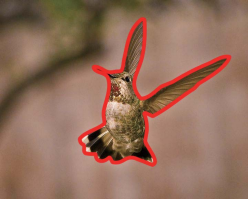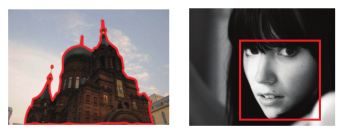Automatically assessing photo quality from the perspective of visual aesthetics is of great interst in high-level vision research. Having an algorithm for photo quality assessment is useful in many appications. For example, in web image search, the search engine can incorporate a photo's quality into its ranking so that it can return the most relevant and the best booking photos. A home user's photo management software can assess the quality of one's vacation pictures and automatically select the best ones to show.
Unlike other high-level vision tasks where a bag of low level features are tossed into a classifier for feature selection, a black box approach using low level features give little insight on the reasons why particular features are chosen, or how to design better features for classification. Our approach mainly focusing on design on high level features according to the criteria that people use for rating photos. Meanwhile, we considering the diversity in photo content, which provides important cues for quality assessment.
Highlights

Content-Based Photo Quality Assessment
X. Tang, W. Luo, and X. Wang, In IEEE Transactions on Multimedia (TMM), 2013
Automatically assessing photo quality from the perspective of visual aesthetics is of great interest in high-level vision
research and has drawn much attention in recent years. In this
paper, we propose content-based photo quality assessment using
both regional and global features. Under this framework, subject
areas, which draw the most attentions of human eyes, are first
extracted. Then regional features extracted from both subject
areas and background regions are combined with global features
to assess photo quality.
PDF

Content-Based Photo Quality Assessment
W. Luo, X. Wang, and X. Tang, In Proceedings of IEEE International Conference on Computer Vision (Poster, ICCV 2011).
We propose content-based photo quality assessment using regional and global features. Under this framework, subject areas, which draw the most attentions of human eyes, are first extracted.
Then regional features extracted from subject areas and the background regions are combined with global features to assess the photo quality. Since professional photographers may adopt different photographic techniques and may have different aesthetic criteria in mind
when taking different types of photos (e.g. landscape versus portrait), we propose to segment regions and extract visual features in different ways according to the categorization of photo content.
Therefore we divide the photos into seven categories based on their content and develop a set of new subject area extraction methods and new visual features, which are specially designed for different categories.
Our new features significantly outperform the state-of-the-art methods.
PDF

Photo and Video Quality Evaluation: Focusing on the Subject
Y. Luo, and X. Tang, In Proceedings of European Conference on Computer Vision (Poster, ECCV 2008).
In this paper, based on professional photography techniques, we first extract the subject region from a photo, and then formulate a number of high-level semantic features based on this subject and background division.
We test our features on a large and diverse photo database, and compare our method with the state of the art. Our method performs significantly better with a classification rate of 93% versus 72% by the best existing method. In addition, we conduct the first study on high-level video quality assessment.
PDF

The Design of High-Level Features for Photo Quality Assessment
Y. Ke, X. Tang, and F. Jing, In Proceedings of IEEE Conference on Computer Vision and Pattern Recognition (Poster, CVPR 2006).
We propose a principled method for designing high level features forphoto quality assessment. Our resulting system can classify between high quality professional photos and low quality snapshots.
Instead of using the bag of low-level features approach, we first determine the perceptual factors that distinguish between professional photos and snapshots.
Then, we design high level semantic features to measure the perceptual differences. We test our features on a large and diverse dataset and our system is able to achieve a classification rate of 72% on this difficult task.
Since our system is able to achieve a precision of over 90% in low recall scenarios, we show excellent results in a web image search application.
PDF